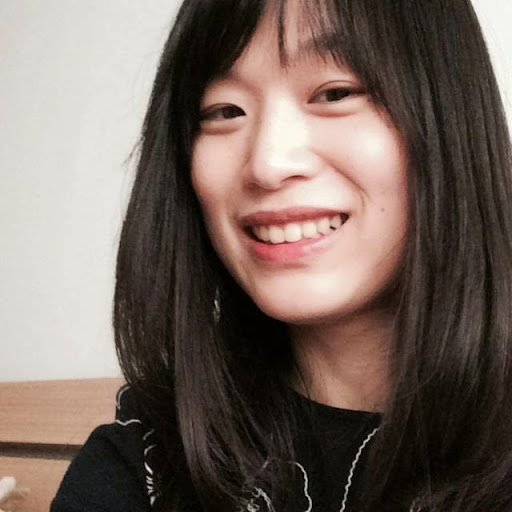Rong Rui Chen
age ~45
from Seattle, WA
- Also known as:
-
- Rong R Chen
- Rongrui Chen
- T Chen
Rong Chen Phones & Addresses
- Seattle, WA
- San Francisco, CA
- El Cerrito, CA
- 8600 Glen Myrtle Ave, Norfolk, VA 23505
Work
-
Company:Pleasant hill libraryMar 2013
-
Position:Volunteer
Education
-
School / High School:Diablo Valley College- Pleasant Hill, CA2012
-
Specialities:Bachelor of Business Administration in Accounting
Skills
1 Computer Proficiency with Word • Power Point and Excel. 2 Bilingual in En... • write and speak). 3 Know how to make an ... • a balance sheet base on Financial Accoun... • Presentation • Responsibility • Task / Time Management.
Ranks
-
Licence:New York - Currently registered
-
Date:2004
Specialities
Banking & Finance • Capital Markets
Lawyers & Attorneys

Rong Chen - Lawyer
view sourceLicenses:
New York - Currently registered 2004
Education:
University of Pennsylvania Law School

Rong Chen - Lawyer
view sourceOffice:
Clifford Chance LLP
Specialties:
Banking & Finance
Capital Markets
Capital Markets
ISLN:
921409210
Name / Title
Company / Classification
Phones & Addresses
President
PERFECT WORLD PICTURES, INC
101 Redwood Shr Pkwy, Redwood City, CA 94065
1001 E Hillsdale Blvd, San Mateo, CA 94404
1001 E Hillsdale Blvd, San Mateo, CA 94404
Principal
China Chef
Eating Place
Eating Place
1200 Ctr Cst Blvd, Concord, CA 94523
1200 Contra Costa Blvd, Pleasant Hill, CA 94523
(925)2880999
1200 Contra Costa Blvd, Pleasant Hill, CA 94523
(925)2880999
CONFILION, LLC
Managing
Rapid Leap Consulting LLC
Consulting
Consulting
34342 Dunhill Dr, Fremont, CA 94555
Us Patents
-
Fabrication Method Of Size-Controlled, Spatially Distributed Nanostructures By Atomic Layer Deposition
view source -
US Patent:8084087, Dec 27, 2011
-
Filed:Feb 14, 2008
-
Appl. No.:12/070367
-
Inventors:Stacey F. Bent - Stanford CA, US
Rong Chen - Sunnyvale CA, US
Xirong Jiang - Stanford CA, US
Marja N. Mullings - Stanford CA, US
Yuji Saito - Tokyo, JP -
Assignee:The Board of Trustees of the Leland Stanford Junior University - Palo Alto CA
Honda Motor Co., Ltd. - Tokyo -
International Classification:C23C 16/00
-
US Classification:42725528, 4272481, 42725511
-
Abstract:A method of growing spatially-separated and size-controlled particles on substrate surfaces is provided. The method utilizes chemical modification of the substrate surface, an atomic layer deposition (ALD) system, providing a modified layer to the substrate surface and providing an ALD material for nanoparticle deposition. The method induces a Volmer-Weber growth method, where islands of the nanoparticles are formed on the surface. The modified layer controls a number of nucleation sites on the surface, where controlling the number of ALD cycles limits an amount of deposited the material for discrete the nanoparticles. The modified layer can include self-assembled monolayers, modified hydrophobicity of the surface, H-terminated surfaces, and varying functional groups within the modified layer, where thermally attached alkenes, photochemically attached alkenes, thermally attached alkynes or photochemically attached alkynes are attached to the H-terminated surfaces, and the density of the nucleation sites of the nanoparticles are thereby managed.
-
Bandwidth And Latency Controller
view source -
US Patent:8255536, Aug 28, 2012
-
Filed:Mar 21, 2008
-
Appl. No.:12/053267
-
Inventors:Rong Chao Chen - Redmond WA, US
-
Assignee:Microsoft Corporation - Redmond WA
-
International Classification:G06F 15/173
-
US Classification:709226, 709223
-
Abstract:Systems and methods described relate to controlling bandwidth and latency in a remote computing environment. A controller establishes a remote session between a client and a remote server. Data transfer between the client and the remote server is routed through the controller. The controller regulates bandwidth consumption and latency in the remote session by simulating a session bandwidth that can be less than the available bandwidth and by injecting delays into data packets transferred in the remote session. Such systems and methods can be used to prioritize remote client sessions and test deployment of applications in a remote computing environment.
-
Method For Recess Etching
view source -
US Patent:20080146034, Jun 19, 2008
-
Filed:Dec 12, 2007
-
Appl. No.:11/954981
-
Inventors:MEIHUA SHEN - Fremont CA, US
RONG CHEN - Sunnyvale CA, US
Scott M. Williams - Belmont CA, US -
Assignee:APPLIED MATERIALS, INC. - Santa Clara CA
-
International Classification:H01L 21/311
-
US Classification:438700, 257E21249
-
Abstract:Methods for recess etching are provided herein that advantageously improve lateral to vertical etch ratio requirements, thereby enabling deeper recess etching while maintaining relatively shallow vertical etch depths. Such enhanced lateral etch methods advantageously provide benefits for numerous applications where lateral to vertical etch depth ratios are constrained or where recesses or cavities are desired to be formed. In some embodiments, a method of recess etching includes providing a substrate having a structure formed thereon; forming a recess in the substrate at least partially beneath the structure using a first etch process; forming a selective passivation layer on the substrate; and extending the recess in the substrate using a second etch process. The selective passivation layer is generally formed on regions of the substrate adjacent to the structure but generally not within the recess. The first and second etch processes may be the same or different.
-
Methods For Monitoring Allograft Rejection
view source -
US Patent:20120165207, Jun 28, 2012
-
Filed:Feb 12, 2010
-
Appl. No.:13/148458
-
Inventors:Atul J. Butte - Stanford CA, US
Rong Chen - Fremont CA, US
Minnie M. Sarwal - Portola Valley CA, US
Tara Sigdel - Palo Alto CA, US -
Assignee:The Board of Trustees of the Leland Stanford Junior University - Palo Alto CA
-
International Classification:G01N 33/566
C40B 30/04 -
US Classification:506 9, 435 792, 435 71, 435 721
-
Abstract:Methods are provided for monitoring an allograft recipient for a rejection response, e.g., to predict, to diagnose, and/or to characterize a rejection response. In practicing the subject methods, the level of at least one protein in a sample from the allograft recipient, e.g., serum, urine, blood, CSF, tears or saliva, is evaluated, to monitor the subject. Also provided are compositions, systems, and kits that find use in practicing the subject methods.
-
Phased Whole Genome Genetic Risk In A Family Quartet
view source -
US Patent:20130080068, Mar 28, 2013
-
Filed:Apr 13, 2012
-
Appl. No.:13/445925
-
Inventors:Frederick Dewey - Redwood City CA, US
Euan Ashley - Menlo Park CA, US
Carlos Daniel Bustamante - Emerald Hills CA, US
Atul Butte - Menlo Park CA, US
Jake Byrnes - San Francisco CA, US
Rong Chen - Fremont CA, US -
Assignee:The Board of Trustees of the Leland Stanford Junior University - Palo Alto CA
-
International Classification:G06F 19/12
-
US Classification:702 19
-
Abstract:An embodiment of the present invention is a methodology for prioritizing variants relevant to inherited Mendelian (“single gene”) disease syndromes according to disease phenotype, gene, and variant level information.
Medicine Doctors

Rong Chen
view sourceSpecialties:
Neurology
Work:
Carle Physician Group
200 Lerna Rd S, Mattoon, IL 61938
(217)2585900 (phone), (217)2583682 (fax)
Carle Physicians Group Neurosciences
602 W University Ave, Urbana, IL 61801
(217)3833440 (phone), (217)3833171 (fax)
200 Lerna Rd S, Mattoon, IL 61938
(217)2585900 (phone), (217)2583682 (fax)
Carle Physicians Group Neurosciences
602 W University Ave, Urbana, IL 61801
(217)3833440 (phone), (217)3833171 (fax)
Education:
Medical School
Zhejiang Med Univ, Hangzhou, Zhejiang, China
Graduated: 1985
Zhejiang Med Univ, Hangzhou, Zhejiang, China
Graduated: 1985
Conditions:
Epilepsy
Migraine Headache
Multiple Sclerosis (MS)
Parkinson's Disease
Peripheral Nerve Disorders
Migraine Headache
Multiple Sclerosis (MS)
Parkinson's Disease
Peripheral Nerve Disorders
Languages:
Chinese
English
Spanish
English
Spanish
Description:
Dr. Chen graduated from the Zhejiang Med Univ, Hangzhou, Zhejiang, China in 1985. He works in Mattoon, IL and 1 other location and specializes in Neurology. Dr. Chen is affiliated with Carle Foundation Hospital.
Resumes

Rong Chen Pacheco, CA
view sourceWork:
Pleasant Hill Library
Mar 2013 to 2000
Volunteer Beijing Ziyouzizai
Aug 2005 to Nov 2009
Assistant
Mar 2013 to 2000
Volunteer Beijing Ziyouzizai
Aug 2005 to Nov 2009
Assistant
Education:
Diablo Valley College
Pleasant Hill, CA
2012 to 2013
Bachelor of Business Administration in Accounting
Pleasant Hill, CA
2012 to 2013
Bachelor of Business Administration in Accounting
Skills:
1 Computer Proficiency with Word, Power Point and Excel. 2 Bilingual in English and Chinese (read, write and speak). 3 Know how to make an income statement, a balance sheet base on Financial Accounting class. 4 Respect, Presentation, Responsibility, Task / Time Management.

Rong Fu Chen
view source
Rong Yao Chen
view source
Rong Chen
view source
Rong Chen
view source
Rong Chen
view source
Rong Chen
view source
Rong Chen
view source
Rong Chen
view sourceClassmates

Rong Chen
view sourceSchools:
Chickahominy Middle School Mechanicsville VA 2000-2004
Community:
Deb Smith, Alyssa Santuk, Sean Mcinerney, Lauren Michaux, Amanda Singleton

Chickahominy Middle Schoo...
view sourceGraduates:
Rong Chen (2000-2004),
Josh Halstead (2000-2004),
Emily Turner (1998-2002),
Adam Curtis (2001-2001)
Josh Halstead (2000-2004),
Emily Turner (1998-2002),
Adam Curtis (2001-2001)

Pace University, New york...
view sourceGraduates:
Rong Chen (2002-2005),
Margaret Carlo (2000-2002),
Yvette Padilla (2000-2006),
Karen Kelly (1986-1988),
Richard Martin (1993-1998),
Alice Rivera (1979-1981)
Margaret Carlo (2000-2002),
Yvette Padilla (2000-2006),
Karen Kelly (1986-1988),
Richard Martin (1993-1998),
Alice Rivera (1979-1981)

CUNY Kingsborough Communi...
view sourceGraduates:
Rong Chen (1999-2002),
Christine Cannizzo (1999-2001),
Barbara Ann Pinkall (1986-1988)
Christine Cannizzo (1999-2001),
Barbara Ann Pinkall (1986-1988)
News

Unexplained 'Genetic Superheroes' Overcome Disease Mutations
view source- However, one possibility is that these individuals also have other genes that somehow suppress these disease-causing mutations, preventing these people from getting sick, said study co-author Rong Chen, director of clinical genome informatics at the Icahn Institute of Genetics and Multiscale
- Date: Apr 11, 2016
- Category: Health
- Source: Google

'Buffer genes' may protect these 13 people from rare genetic diseases
view source- To test their idea, Friend, Schadt, Mount Sinai genomics expert Rong Chen, and co-workers gathered genetic data from more than 589,000 generally healthy adults who had donated their DNA for research. The bulk of them400,000 people whose genomes had been scanned for genetic markerscame from 23andMe
- Date: Apr 11, 2016
- Category: Health
- Source: Google
Flickr
Googleplus

Rong Chen
Education:
Tsinghua University

Rong Chen
About:
瘋狂死韓飯
Bragging Rights:
死大學生在麻將桌上討論專題

Rong Chen

Rong Chen
Bragging Rights:
有个小美女

Rong Chen

Rong Chen

Rong Chen

Rong Chen
Youtube
Plaxo

Rong Chen
view sourceSymyx Technologies

Rong Chen
view sourceTBC
Get Report for Rong Rui Chen from Seattle, WA, age ~45













